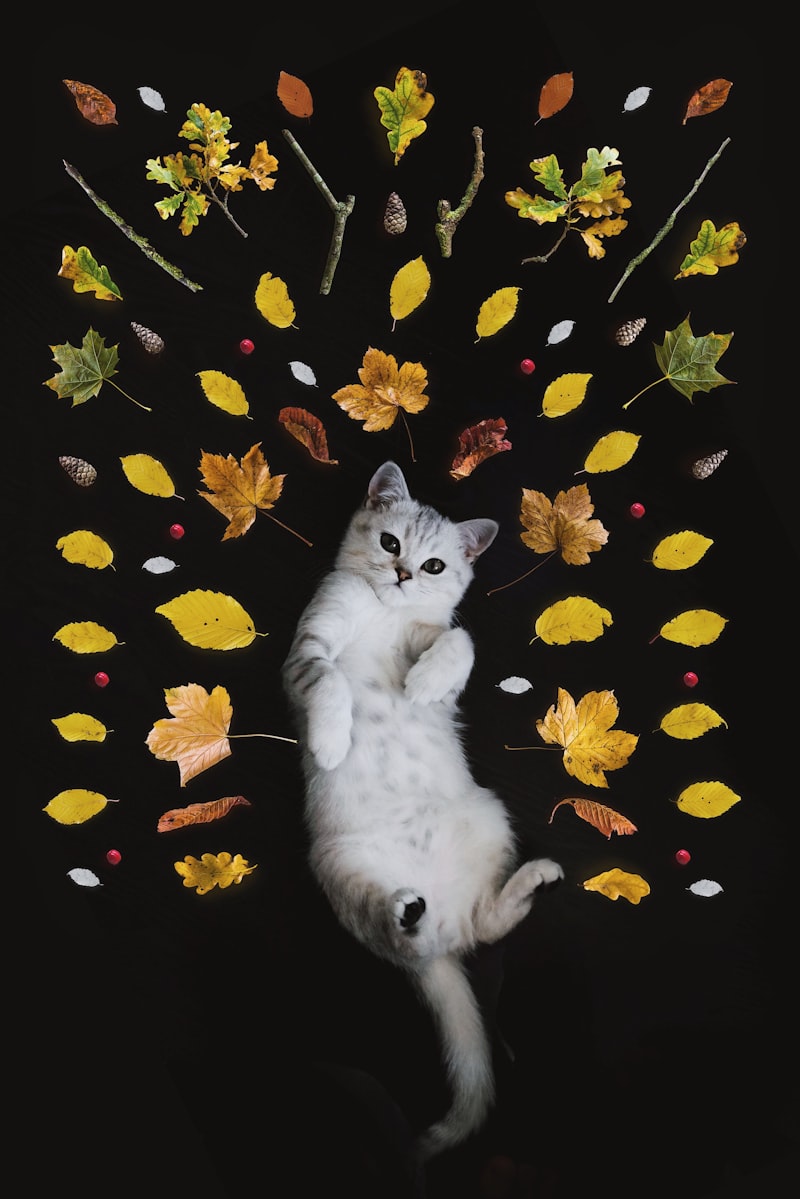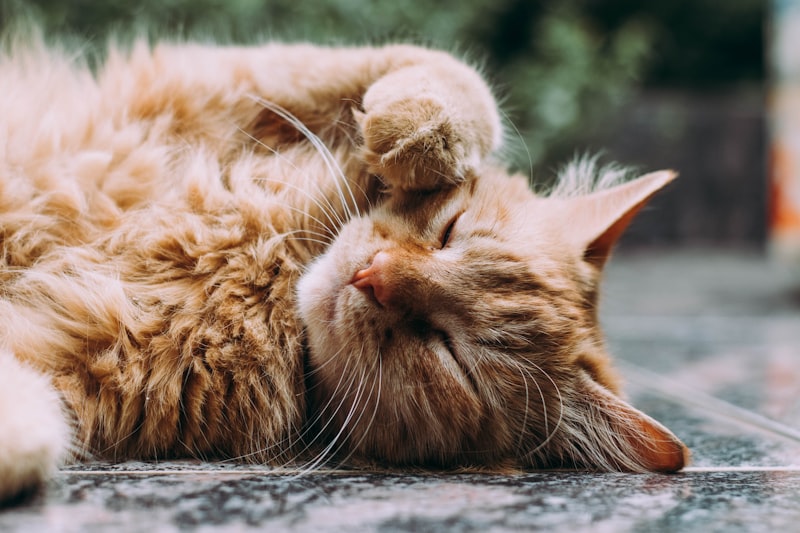When it comes to cat allergies, it’s usually the proteins found in cat saliva, skin, and urine that trigger the allergic response. Picture this: every time your cat licks its fur, those tiny allergenic proteins are released into the air, just waiting to irritate your sensitive nose and lungs. You might experience a range of symptoms—from sneezing and a runny nose to itchy, watery eyes and even skin rashes. Sounds familiar, right? The severity of these symptoms can vary from person to person, making it all the more frustrating.
So, what’s the game plan for tackling cat allergies? First off, it’s essential to reduce allergens in your home. Keeping your living space clean can work wonders—think regular vacuuming (with a HEPA filter, if possible) and washing those cuddly blankets and beddings. You might also consider investing in an air purifier to filter out those pesky particles floating around.
Another smart idea? Designate cat-free zones, especially your bedroom. Trust me, a good night’s sleep away from allergens can make a world of difference! For those times when symptoms hit hard, over-the-counter antihistamines can be your best friend. They’re like the trusty umbrella in a rainstorm, keeping you comfortable as you navigate your allergy challenges.
If you find your symptoms still wreaking havoc, don’t hesitate to chat with a healthcare professional. They might suggest allergy shots or other treatments specifically designed to help you breathe easier around your feline companions.
Sneezing and Wheezing: Identifying the Hidden Triggers of Cat Allergies
First off, it’s not just the fur that’s the villain. Cat allergens are invisible, microscopic proteins found in their saliva, skin, and even urine. When your kitty grooms itself, those allergens hitch a ride on their fur and float into the air, making it seem like an airborne conspiracy! Have you ever noticed that your symptoms flare up right after your cat decides to take a seat on your lap? That’s not just coincidence; it’s an allergic reaction in the making.

But don’t despair! Understanding your triggers is like holding a treasure map to feeling better. For many, allergens might include dander — those tiny flakes of skin that we often overlook. You know when your cat sheds, and you think, “That’s just a little fluff”? That fluff can wreak havoc on your respiratory system. Adding to that, dust and pollen can cling to your cat’s fur, creating a perfect storm of allergies that packs a punch.
Also, think about your cleaning habits. That wooly blanket your cat loves? It might be a cozy cuddle zone, but it could also be a haven for allergens. Regular vacuuming and washing can help keep the sneezes at bay.
So, next time you find yourself in a sneezing fit, don’t just blame Fluffy. Instead, look around—you might just discover the hidden triggers lurking in your cozy cat-friendly home.
Feline Friend or Foe? Navigating the Symptoms of Cat Allergies
First off, let’s chat about the classic signs. If you’re suddenly sneezing more than usual or your nose feels like it’s staging an eviction notice, your body might be expressing its discontent. It’s like your immune system is throwing a little tantrum because it doesn’t appreciate that fluffy friend lounging on your lap. Watery eyes and itchy skin can also join the party, making you feel like you’ve stepped into a never-ending allergy commercial.
Ever noticed that your chest gets tight or you start wheezing? That’s not just the thrill of petting a new cat; it could be asthma acting up due to those particles floating in the air. These little allergens, found in cat saliva, urine, and dander, are stealthy culprits that can invade your space without warning. They cling to surfaces, so you might think you’re free and clear after one good clean-up—think again! It’s like trying to get rid of glitter after a craft project; it lingers longer than you’d like.
Recognizing and managing these symptoms can feel like a daunting challenge, but understanding your body’s signals is crucial. By paying attention and maybe even chatting with your doctor about allergy tests, you can make sense of the chaos. You see, it’s all about finding that balance between loving your cat and keeping your health in check. After all, isn’t life just a bit better with a feline friend by your side?
From Itch to Relief: Effective Treatments for Cat Allergy Sufferers
First up, let’s talk about the tried-and-true antihistamines. Think of them as your allergy superheroes. They swoop in to save the day by blocking those pesky histamines that cause all that itchiness. You can grab these over the counter, and voilà, relief can be just a pill away! But remember, some might make you drowsy—so don’t plan on binge-watching your favorite series right after.
Now, if you’re looking for a more permanent solution, allergy shots, or immunotherapy might be your best bet. Imagine training your immune system to play nice with cat dander. Over time, you gradually expose yourself to allergens in controlled doses, helping your body build tolerance. It’s like teaching a stubborn child to share—might take a while, but the outcome can be fantastic!
And let’s not forget about the homefront. Keeping your living space cat-friendly for your allergies is crucial. Regular cleaning, using HEPA filters, and creating no-go zones for your furry companion can drastically improve your quality of life. Picture this: a cozy nook just for you, where your sneezes are few, and your peace remains intact.
Finally, don’t overlook the power of natural remedies. Some swear by nasal rinses or air purifiers to keep those allergens at bay. It’s like creating a mini fortress against pollen and dander! The goal? To reclaim your space—and your ability to cuddle your cat without a sneeze attack!
Don’t Let Cat Allergies Curb Your Love for Felines: Expert Advice on Management
First off, let’s get real about what cat allergies actually are. It’s not the fur that trips your immune system’s alarm; it’s proteins found in their skin, saliva, and urine that send your body into overdrive. Think of it like a tiny rebellion happening in your nose and eyes. But don’t despair; living with a cat can still be a walk in the park if you take some smart steps.

Start with creating a cat-friendly zone in your home. Designate an area, like your bedroom, that’s a strict no-cat zone. This little sanctuary gives you a place to retreat when allergies flare up. Meanwhile, consider investing in an air purifier—think of it as a bouncer for your indoor air. It helps to filter out those allergens and makes it easier to breathe.
Another tip? Regular grooming. While it sounds counterintuitive, brushing your kitty frequently (preferably by someone who doesn’t have allergies) can reduce the amount of loose hair and dander floating around. It’s like giving your cat a spa day while simultaneously giving your allergies a time-out.
Don’t forget to wash your hands after petting, and always have some tissues handy when cuddling up—because sneezing will inevitably happen! And hey, with love and a little planning, you can have your cat and pet them too. Your feline friend will provide the purrs, while you manage to control those allergies. So, who says you can’t have it all?
Cat Allergies Exposed: Uncovering the Myths and Misconceptions
Now, let’s address another common misconception – that hypoallergenic cats are entirely allergy-free. Sorry to burst your bubble, but that’s not quite true. Breeds like the Siberian might produce less of that pesky protein, but if you’re allergic, no cat is completely safe from triggering your sensitive system. Think of it like ordering a “gluten-free” pizza: it might be better on your stomach, but there could still be a few crumbs hiding in there!
And what about those allergy shots? Many folks believe that getting a shot is a magic pill that will let them snuggle with Mr. Whiskers without a care in the world. Well, while these shots can help reduce symptoms, they aren’t a guaranteed fix. It’s more like putting a Band-Aid on a leaky faucet – it helps a bit, but might not solve the whole problem.
So when exploring cat allergies, it’s important to peel back the layers and look beyond the common myths. This way, you can truly enjoy life with your feline friend without being constantly held hostage by sneezes and sniffles.






